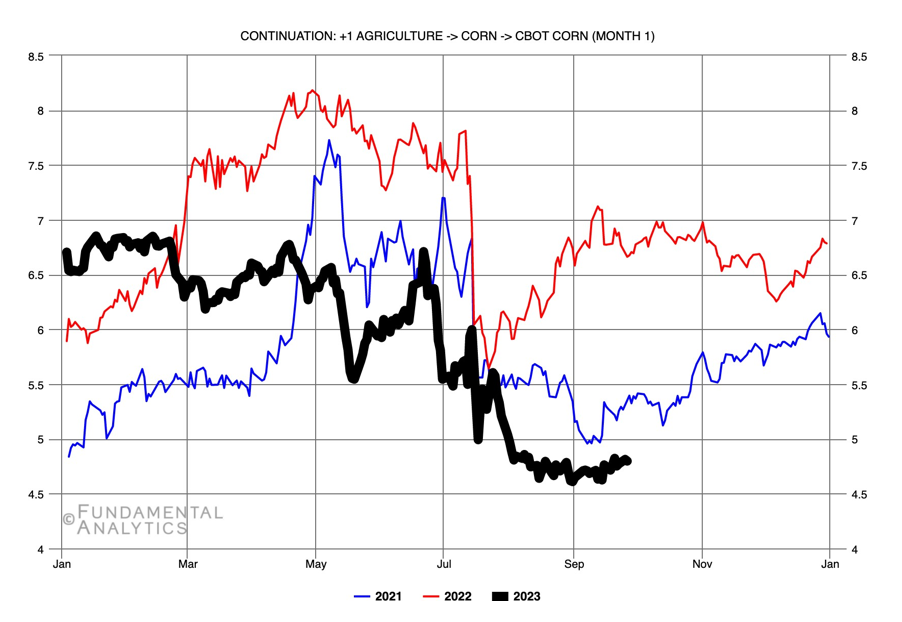The Panama Canal Authority is restricting, for at least 10 months, the amount of traffic passing through the Canal, which normally carries 40% of the shipping from the US. This is due to a multi- year drought draining Gatu´n Lake, which supplies water to one of the three locks of the Canal. A similar situation is happening in the US. The Mississippi River and its network of tributaries form the fundamental structure for moving Midwest grains down to New Orleans. Barges carry 60% of US grains for export, and the condition of the Mississippi River affects the price that barges charge for hauling grains, which in turn could affect the price of the grain. Let’s look at the way this issue is affecting the price of corn, one of the most exported grains. Let’s begin with a chart of the price of corn over the past several years.

For several years, some of the world’s largest rivers have been running low, such as the Rhine River in Europe and the Yangtze River in China. (YouTube has a video entitled Yangtze river reduced to rocks and pebbles, which is a bit melodramatic.) The Mississippi River basin drains more than 40% of the US, so any widespread decrease in rain in the country will cause its level to drop.
Normally, 20% of the corn crop is exported, and more than 60% of that is shipped down the Mississippi. Barges are the cheapest and most sustainable method of moving grain from the Midwest to places as far away as New Orleans, but they require a certain minimal river depth to be able to operate. For example, there was a backup on the Mississippi River in October 2022 due to low water levels. There had been little rain over much of the basin from the middle of August until then. There were at least 8 “groundings” at the time, including a cruise ship. The U.S. Army Corps of Engineers was dredging it regularly, and setting limits as to how many barges a towboat could pull. The price of shipping grain by barge jumped from a normal $10 to $12 per ton to a record $105.85 per ton on October 11, 2022. Fortunately, the situation became more reasonable quite rapidly.
Then the spring of 2023 arrived, and with it a lot of rain. Many places on the Mississippi saw the river crest at 5 to 8 feet above flood level. The US House introduced a bipartisan bill HB5722 with the goal to “require the Corps of Engineers to update Upper Mississippi River levee and floodwall design standards” in order to address the problem. But the whole idea of a river is to empty itself, and the Mississippi certainly did. The floods subsided and kept going down. By the time it was needed for barge transportation, the Mississippi was back near the previous year’s lows, with many of the same problems.
The graph above shows that the price of corn did not significantly rise during these times of restricted ability to transport by barge. Farmers have been through this before and have been moving grains to silos, waiting for better opportunities to transport it. The net result is the prices have stayed fairly stable, but shipments have been delayed, and any surplus is being depleted. But an extended drought in the Mississippi basin could generate serious problems for farmers and the countries expecting their corn or other grains. We have avoided disaster so far, but with shifting patterns of heat (which causes evaporation) and rain (or lack of it), we should not rely on luck much longer.